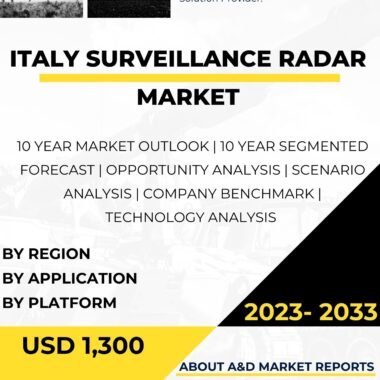Description
The Brazil Small Unmanned Aerial Vehicle (UAV) Market holds significant importance for the country’s defense, security, and commercial sectors, as it seeks to harness the potential of small UAVs to address diverse challenges and opportunities. Small UAVs, also known as drones, are unmanned aircraft with limited size and payload capacities, often used for surveillance, reconnaissance, data collection, and aerial imaging. As Brazil faces various security threats, environmental monitoring needs, and commercial applications, the market for small UAVs has gained prominence. This article provides a comprehensive analysis of the Brazil Small UAV Market, covering its current state, key drivers, challenges, applications, regulatory framework, and growth prospects.
The Brazil Small UAV Market has witnessed substantial growth due to the country’s recognition of the value of UAVs in diverse sectors. As a large and geographically diverse nation, Brazil faces security challenges that demand advanced surveillance and reconnaissance capabilities. Small UAVs offer a cost-effective and flexible solution for monitoring borders, critical infrastructure, and remote areas, providing essential situational awareness to defense and security forces.
One of the key drivers behind the market’s prominence is Brazil’s ambition to enhance its defense capabilities through advanced technologies. Small UAVs play a crucial role in military operations, enabling the armed forces to conduct intelligence gathering, target identification, and monitoring of potential threats. By investing in small UAVs, Brazil aims to bolster its military’s situational awareness, increase operational effectiveness, and respond proactively to emerging security challenges.
Moreover, the Brazil Small UAV Market is driven by the country’s need for effective environmental monitoring and disaster management. Brazil’s vast and diverse ecosystems, including the Amazon rainforest, require continuous monitoring to address deforestation, illegal logging, and other environmental threats. Small UAVs equipped with advanced sensors can aid in assessing environmental changes, collecting data on biodiversity, and supporting conservation efforts.
The market’s growth is also influenced by Brazil’s interest in using small UAVs for commercial applications. Industries such as agriculture, infrastructure inspection, and media production have embraced UAV technology for cost-efficient aerial surveys, crop monitoring, and capturing stunning visual content. Small UAVs offer a safe and efficient alternative to traditional methods, reducing operational costs and increasing productivity.
The Brazil Small UAV Market finds diverse applications across various sectors, each contributing to the country’s overall security, environmental protection, and economic development. In the defense sector, small UAVs are essential for intelligence, surveillance, and reconnaissance (ISR) missions. Equipped with high-resolution cameras and other sensors, these UAVs provide valuable real-time data to military units, enhancing their ability to make informed decisions and respond to threats effectively.
Additionally, in the security domain, small UAVs play a crucial role in law enforcement operations. Police forces can deploy UAVs for aerial surveillance during events, crowd control, and search and rescue operations. Small UAVs equipped with thermal imaging cameras can aid in locating missing persons or tracking suspects in challenging terrain.
Moreover, the Brazil Small UAV Market serves various civilian applications, including environmental monitoring and conservation. Conservation organizations can use small UAVs to monitor wildlife populations, detect illegal logging or mining activities, and assess the impact of environmental changes. UAV technology contributes to data-driven decision-making in conservation efforts.
Furthermore, small UAVs have revolutionized agriculture practices in Brazil. Farmers and agronomists use UAVs equipped with multispectral and thermal sensors to assess crop health, identify areas with water stress, and optimize the use of fertilizers and pesticides. This precision agriculture approach enhances crop yields, reduces resource waste, and promotes sustainable farming practices.
Despite the market’s growth and potential, the Brazil Small UAV Market also faces certain challenges. One significant challenge is the regulatory framework governing UAV operations. Ensuring safe and responsible UAV use while promoting innovation and economic growth is essential. Striking the right balance between enabling commercial applications and addressing security and privacy concerns remains a complex task for policymakers.
Moreover, addressing the issue of airspace management and UAV integration into the national airspace poses challenges. As the number of small UAVs increases, ensuring their safe and coordinated operation alongside manned aircraft is crucial for preventing airspace incidents and accidents.
Looking ahead, the Brazil Small UAV Market is expected to witness continued growth and innovation. As the country faces evolving security challenges, environmental concerns, and economic opportunities, the demand for small UAVs will remain strong. Continued investment in research and development, technology transfer agreements with international partners, and collaboration between the government and private sector will drive advancements in UAV technology and applications.
In conclusion, the Brazil Small UAV Market plays a pivotal role in addressing the country’s defense, security, environmental, and economic needs. Small UAVs provide valuable intelligence, surveillance, and reconnaissance capabilities for the military and law enforcement. Moreover, they enable cost-effective and efficient environmental monitoring and contribute to economic development through commercial applications. The market’s growth is driven by Brazil’s ambition to enhance its defense capabilities, address environmental challenges, and embrace innovative technologies. Addressing challenges related to regulations, airspace management, and privacy will be key to unlocking the full potential of small UAVs in bolstering Brazil’s security, environmental protection, and economic growth.




